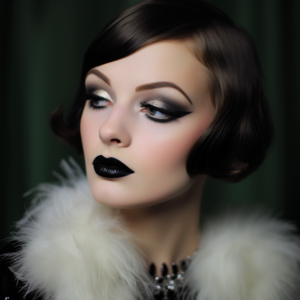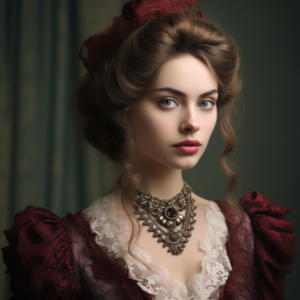In the illustrious tapestry of history, the Elizabethan Era, spanning from the late 16th century to the early 17th century, stands as a period of grandeur, elegance, and societal transformation. Amidst the opulence of the Elizabethan court and the flamboyant fashions of the time, makeup played a pivotal role in shaping beauty standards and social hierarchies. This exploration unravels the intricacies of makeup in the Elizabethan Era, shedding light on its connection to notions of beauty and social status.
Introduction
The Elizabethan Era, characterized by the reign of Queen Elizabeth I, witnessed a flourishing of arts, literature, and exploration. It was also an era marked by a distinctive approach to beauty and self-presentation. Makeup, far from being a mere adornment, became a powerful tool that conveyed social standing, adherence to fashion, and allegiance to the reigning monarch.
Whiteness and Purity: The Ideal Complexion
Pale and ethereal complexions were considered the epitome of beauty during the Elizabethan Era. Women of the upper echelons of society went to great lengths to achieve this idealized look. The pursuit of a pale complexion was not only a beauty standard but also a symbol of nobility, as it implied a lifestyle of leisure and refinement.
To achieve this coveted pallor, Elizabethan women employed various substances, including lead-based Venetian ceruse. This white cosmetic paste was applied liberally to the face and neck, despite its known toxicity. The risks associated with these cosmetics were often overlooked in the relentless pursuit of the desired aesthetic.
Theatricality and Symbolism
The Elizabethan court was a stage for both political intrigue and dramatic displays of wealth and status. Makeup became a means of theatrical self-presentation, with women using it to signify their social position and adherence to courtly conventions. Theatrical performances, masques, and elaborate court ceremonies provided opportunities for women to showcase their beauty and fashion sensibilities.
The use of cosmetics extended beyond the face; women often enhanced their hair with ornate headdresses and wigs adorned with jewels and ribbons. The artful arrangement of accessories complemented the theatricality of their overall appearance, reinforcing their social standing.
Red Lips and Rosy Cheeks: Symbolizing Vitality
While a pale complexion was revered, other facial features were adorned with vibrant colors. Red lips and rosy cheeks, achieved using natural substances like beetroot and plant dyes, symbolized vitality and health. These touches of color added a dynamic contrast to the prevailing whiteness, creating a visual representation of the delicate balance between life and death.
Fashion, Beauty, and Social Strata
The elaborate fashions of the Elizabethan Era were intricately linked with beauty standards. The ruffs, farthingales, and ornate fabrics demanded a corresponding level of attention to grooming and makeup. The elaborate hairstyles, often adorned with jewels, signified not only wealth but also adherence to the prescribed standards of beauty dictated by the court.
Social status was further delineated by the sumptuary laws that regulated the type and quality of fabrics, clothing, and adornments permitted for each class. Makeup, therefore, became a visible marker of one’s adherence to these regulations and a reflection of their place in the intricate social hierarchy.
Challenges and Criticisms
While the Elizabethan Era is celebrated for its cultural achievements, it’s essential to acknowledge the darker aspects of the beauty practices of the time. The widespread use of lead-based cosmetics had severe health consequences, with reports of lead poisoning and skin damage prevalent among those who regularly used these products. The pursuit of beauty often came at a considerable cost.
Legacy in Contemporary Beauty
The beauty standards set during the Elizabethan Era continue to influence modern aesthetics. The emphasis on a flawless, pale complexion persists, although contemporary makeup practices prioritize health and safety. The theatricality of Elizabethan beauty has left an indelible mark on costume design, makeup artistry, and fashion shows, where elements of historical extravagance are often incorporated.
Conclusion
Makeup in the Elizabethan Era transcended the boundaries of mere embellishment; it was a symbol of social standing, adherence to courtly conventions, and a theatrical expression of beauty. The pursuit of an idealized aesthetic came with risks, yet it undeniably shaped the cultural landscape of the time. As we explore the history of makeup, the Elizabethan Era stands as a chapter where beauty, fashion, and social status converged in a splendid and complex tapestry.


